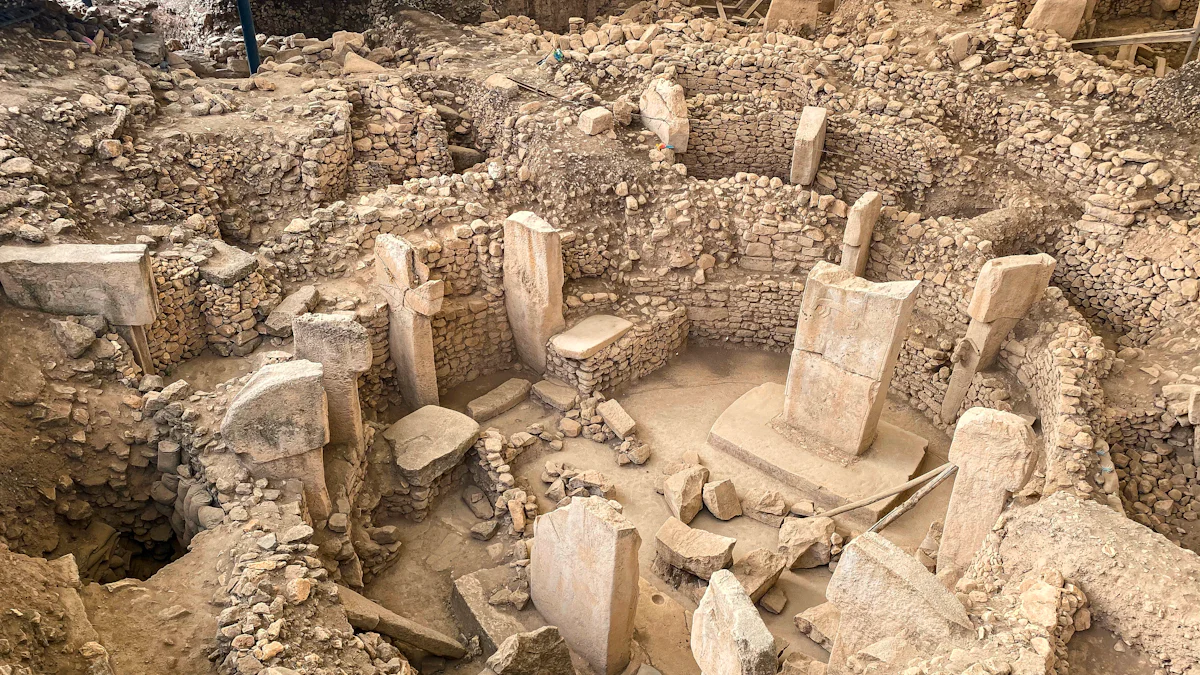History: The Past as You've Never Seen it Before

Embark on an exciting journey through history. Discover the past like never before. Experience a unique perspective that transforms historical events into vivid stories. Explore ancient civilizations and modern innovations with engaging visuals and captivating facts. The global online learning market projects to hit $370 billion by 2026. This growth reflects the increasing interest in understanding history's context and significance. Dive into this educational adventure. Uncover the marvels of our world with a fresh lens. History awaits your exploration.
Ancient Civilizations

Mesopotamia: The Cradle of Civilization
Mesopotamia stands as a beacon in the early chapters of history. The region witnessed the birth of writing. Sumerians used pictographs, which evolved into symbols for words and sounds. This development allowed record-keeping and communication of ideas. The written word became a powerful tool.
The Code of Hammurabi emerged as a significant milestone. Hammurabi established one of the earliest known legal codes. The code provided a framework for justice and governance. Society found structure through these laws.
The Birth of Writing
Writing transformed Mesopotamian society. Sumerians developed cuneiform, a system using wedge-shaped marks. This innovation enabled efficient communication. Merchants recorded transactions with precision. Scholars documented stories and knowledge.
The Code of Hammurabi
Hammurabi's code included 282 laws. These laws covered various aspects of daily life. Justice became more accessible to the people. The code influenced future legal systems worldwide.
Ancient Egypt: Land of the Pharaohs
Ancient Egypt captivates with its grandeur. The civilization thrived along the Nile River. Egyptians developed a unique hieroglyphic writing system. This system facilitated communication and record-keeping. Hieroglyphs adorned temples and monuments.
The Pyramids and Their Mysteries
The pyramids stand as architectural marvels. Workers constructed these structures with precision. The purpose of the pyramids remains a topic of intrigue. Some theories suggest they served as tombs for pharaohs. Others believe they held religious significance.
The Nile and Its Importance
The Nile River played a crucial role in Egyptian life. The river provided water for agriculture. Fertile soil supported abundant crops. The Nile enabled trade and transportation. The river's annual flooding ensured prosperity.
The Middle Ages
The Rise of Feudalism
Feudalism shaped medieval society. Lords owned vast lands. Vassals pledged loyalty to these lords. This system created a network of obligations and protection. Land ownership defined power and status.
Lords and Vassals
Lords granted land to vassals. Vassals provided military service in return. This exchange formed the backbone of feudal society. Loyalty and duty governed these relationships. The bond between lord and vassal ensured stability.
The Manorial System
The manorial system organized rural life. Manors included villages and farmland. Peasants worked the land for the lord. In return, peasants received protection and a place to live. This system supported the economy and daily life.
The Age of Chivalry
Chivalry emerged as an ideal. Knights followed a code of conduct. This code emphasized bravery, honor, and service. Knights trained from a young age. The code guided their actions on and off the battlefield.
Knights and Their Code
Knights upheld the chivalric code. This code varied across regions. Knights demonstrated courage and loyalty. Service to others became a noble pursuit. The code inspired tales of heroism and adventure.
The Influence of the Church
The Church played a vital role in medieval life. Religious leaders influenced politics and culture. The Church provided education and spiritual guidance. Many knights dedicated their lives to religious causes. The Church's teachings shaped the moral landscape.
Modern Innovations

The Industrial Revolution
The Industrial Revolution transformed society. Factories emerged as symbols of progress. Workers operated machines that increased production. This shift marked a new era in History.
The Birth of Factories
Factories became the heart of industrial cities. Entrepreneurs invested in machinery. Workers produced goods at unprecedented rates. Urban areas expanded rapidly. The factory system revolutionized manufacturing.
The Impact on Society
Society experienced profound changes. Urbanization increased as people moved to cities. Living conditions varied greatly. Economic growth brought prosperity for some. Wage depression and underemployment affected others. The Industrial Revolution reshaped social dynamics.
The Digital Age
The Digital Age revolutionized communication. Technology connected people worldwide. Information became accessible at the click of a button. The digital world opened new opportunities and challenges.
The Rise of the Internet
The Internet changed how people interact. Online platforms facilitated global communication. Businesses embraced e-commerce. Education expanded through digital resources. The Internet became a vital part of daily life.
The Information Revolution
The Information Revolution impacted societies. Digital tools transformed industries. Developing nations faced unique challenges. Economic development required digital adaptation. Wealth concentration increased in some regions. The Digital Age continues to shape modern History.
History offers a vibrant tapestry of stories and innovations. Ancient civilizations like Mesopotamia and Egypt laid the foundations for writing and governance. The Middle Ages introduced feudalism and chivalry, shaping societal structures. Modern innovations like the Industrial Revolution and the Digital Age transformed communication and industry. Each era presents unique challenges and achievements. Embrace curiosity and explore these fascinating periods. History invites you to uncover its mysteries and marvels. Dive deeper into the past and discover the lessons it holds for the future.
See Also
Visual Encyclopedia of American History
Civilization to Present: A History Journey
Visual History of the American Revolution

